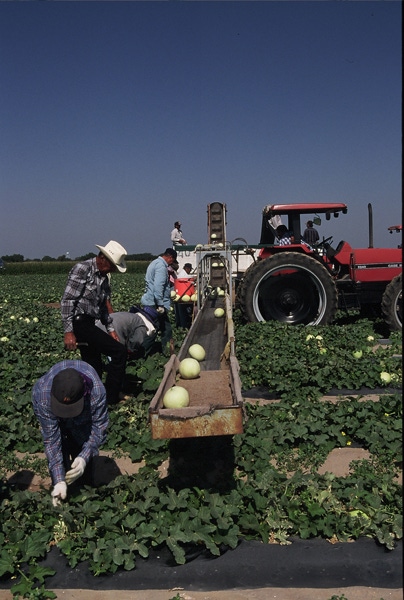
Recent outbreaks of Listeria in Colorado cantaloupes and salmonella contamination of eggs and lettuce in California and the Midwest are fueling the fires of controversy that have many asking about the safety of U.S. food products.
Add to that the growing number of Latin American imports of fruits and vegetables and widespread media coverage of food safety issues internationally, and it makes for an escalating crisis that has consumers, growers, packers and distributors on the same page when it comes identifying and correcting weak links in the U.S. food safety system.
But a close examination of recent food contamination reports may bring to light a more sobering conclusion. It appears that regardless how diligent and careful the food industry may strive to be, and in spite of new food safety regulations imposed by the FDA through the Food Safety Modernization Act (FSMA), contamination of food products is an issue that refuses to go away.
“For one thing, the lofty goals of the FSMA may be for the good of all, but the law was created without any budget to support it,” says John McClung, President of the Texas Produce Association. “What good is a law or regulation that can’t be enforced?”
The FDA Food Safety Modernization Act (FSMA) was signed into law by President Obama on January 4th, 2011. It aims to ensure the U.S. food supply is safe by shifting the focus of federal regulators from contamination response to one of prevention at the industry level. But critics like McClung argue food safety and contamination issues go beyond the farm and processing plant and require understanding and compliance all the way from the farm to the consumer’s kitchen.
“Nearly a third of all food borne illness is caused by the consumer. They way food is handled and stored and washed and the way it is prepared or underprepared plays a major role in food safety, and while the food production industry must be responsible in minimizing the chance of contamination, the responsibility can not stop there,” McClung says.
Shared responsibility
He is quick to point out that the food industry plays a major role in preventing food contamination and must continue to be interactive in control and management. He says farmers and processing plants invest millions each year to acquire and implement the latest in new technologies and procedures designed to reduce infection and contamination. But he warns that is not enough. And with the introduction and regularity of imported foods in the U.S. market, the challenge of preventing contamination and disease is increasing.
USDA-ARS scientist Robert Mangan agrees. Mangan is an entomologist and coordinator of the Kika de la Garza Sub-Tropical Agricultural Research Center in Weslaco, Texas, located just a few miles from nine international bridges linking the United States and Mexico. Tons of agricultural products move between the two countries each day including vegetables from Mexico and cantaloupes from Central America. Mangan is considered one of the leading experts on food imports from Mexico and Central and South America.
“It’s a misconception to assume that fruits and vegetables imported from Latin America are less safe than domestic varieties. In truth, licensing and permits for Mexican produce plants are the same as they are in the United States. We are just as likely to find food borne contamination in domestic produce as we do in imported varieties,” Mangan said. “The majority of problems we are seeing relative to food safety include problems in storage facilities, in shipping and distribution networks, at retail outlets and in consumer homes. There is no one person or industry to blame.”
McClung says we may be hearing more about food safety these days than ever before, but the problem has always existed. He contends there are fewer problems on the farm and in the packing houses than ever before because of better education and regulation. But he and Mangan agree that microbial infections in food are very common and widespread and are difficult to prevent.
“It’s a problem we can not escape and one in which we dare not lower our guard. But by-and-large industry is doing a much better job today than ever before,” McClung says.
Mangan warns consumers to be ever mindful of washing fruits and vegetables and cleaning up afterwards.
“A little Clorox and water will go a long way in greatly reducing problems like Listeria and salmonella. It’s something we need to keep in front of the consuming public as much as we do food producers and suppliers. Only then will we see improvement in the safety of our food,” Mangan adds.
About the Author(s)
You May Also Like






